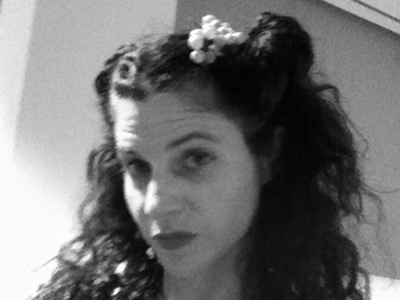The American Craft Council’s 2019 conference, Present Tense, was identified at the outset as a “national conversation on craft in an increasingly tense and complex present.” This theory turned into practice meant an ambitious schedule of lecture hall panels punctuated with “Object Story” interludes; tours to area galleries, art schools, and other places; workshops that encouraged making as a catalyst to action and community-building; and social gatherings. The conference took place October 10–12, 2019.
Recognizing that everyone goes to events such as these with different agendas and leaves with differing responses, it’s difficult to assign a status of success or failure to the conference itself. More useful is to highlight panel topics, words, ideas, or discussion trends that could be used as markers for broader conversations in the field of contemporary craft.

Main Stage Moment I—Toward a Healthy Craft Ecosystem
(afternoon of Thursday, October 10, 2019)
For this opening panel, Philadelphia—with its rich craft history and its vibrant craft present—was highlighted as a potential model for city-/region-wide interest in cultivating, maintaining, or refurbishing a “craft ecosystem” (not properly defined but easy enough to infer—also easy to replace with other phrases oft-overheard: craft ecology or craft environment). Representatives from larger institutions, such as Elisabeth Agro from the Philadelphia Museum of Art, and smaller ones (such as Alex Gilliam from Tiny WPA/Public Workshop, an organization that focuses on youth community programs for design and public engagement) offered details and dynamics about how they function individually and as part of a greater whole. These micro-presentations were informative and inspiring—of course, the emphasis was on the positive and the potential of place-making. There wasn’t time to hear about the problems they overcame to get what they have or the problems that still exist. This panel did set up the arc on community picked up on throughout the conference—with the idea that the greatest good is achieved when individuals come together despite difference or complication.
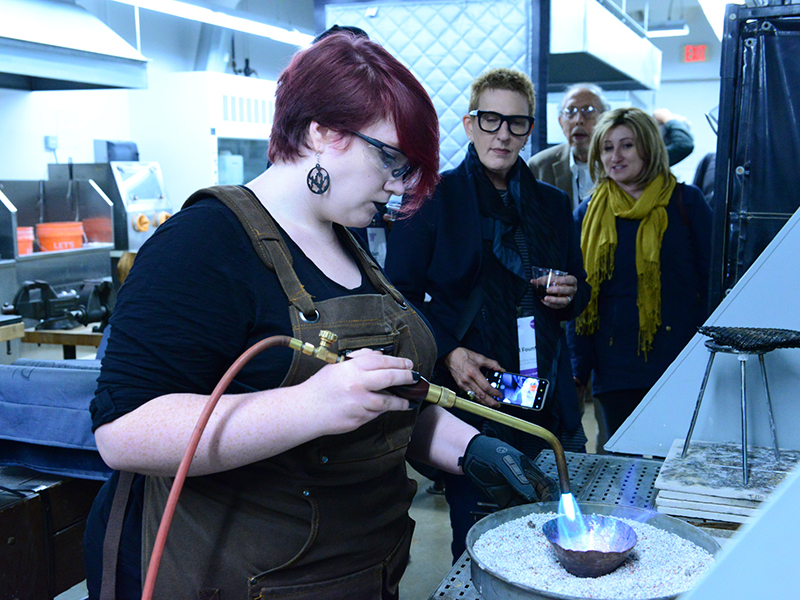

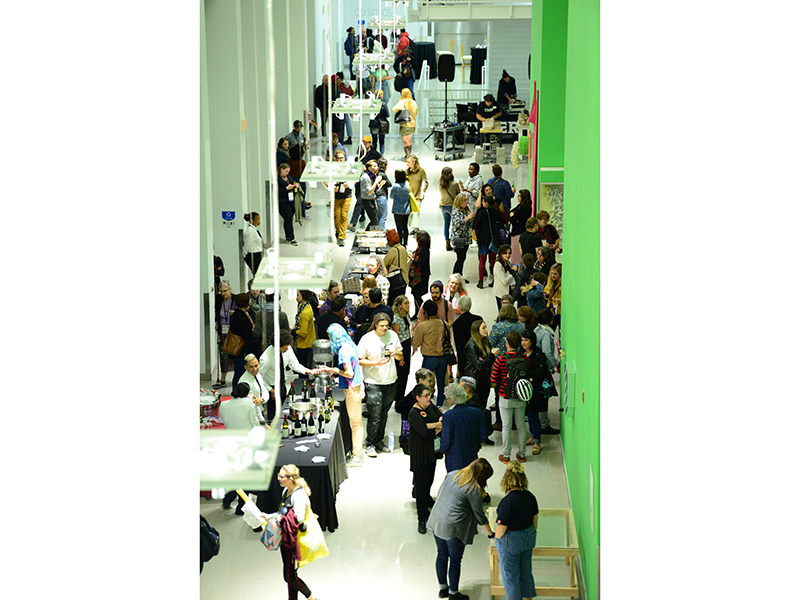
Tyler Craft Mash-Up
(night of Thursday, October 10, 2019)
The potential of Philadelphia was further magnified with the Tyler Craft Mash-Up. Tyler School of Art’s student studio spaces and facilities were showcased, with students available to talk about their work, the facilities, etc. They were also working/giving demos—a particularly interesting point to an audience that, to a large degree, was likely well versed in the processes. What it ultimately reflected was the caliber and enthusiasm of the students and the possibilities for the future in craft. The strength of the craft program at Tyler, especially known to this reviewer for metals/jewelry, was highlighted through the students, and another of the points that arced through the conference—intergenerational exchange—was magnified.
Other hallmarks included the obvious dynamism and strength of Doug Bucci, who now heads the metals program, and Mallory Weston—both brought on in 2018. Their roots in metals practice, along with Tyler’s strength with digital tech, pairs nicely with the city’s opportunities for forming a strong base in craft knowledge and history while also engaging with contemporary issues. This particular point was furthered by one whole room dedicated to the “candy craft” of the Franklin Fountain. The oldest candy store in the country, Franklin Fountain has collaborated with Tyler craft students on more than one project, including mold-making utilizing historical molds. Reverence for process, regardless of the material or the end result, was celebrated by every generation present in the conversation.

Main Stage Moment 4—Making a Seat at the Table: Women Transform Woodworking
(morning of Friday, October 11, 2019)
A panel focused on women working in wood was a provocative mix of generations, backgrounds, modes of making/working, and spheres of influence. Panelists highlighted the challenges of navigating a still male-dominated area of contemporary making. Especially compelling were stories about what some women do or have done to garner respect, or at least not foster derision, at a lumberyard. The insight and determination of this group seemed to underscore a subtext agenda for the conference as a whole—at this moment, with so many perceived fractures in contemporary society and so much push to recognize those who haven’t been given due or notice, there is value to weathering difficulties and experimenting with new approaches.
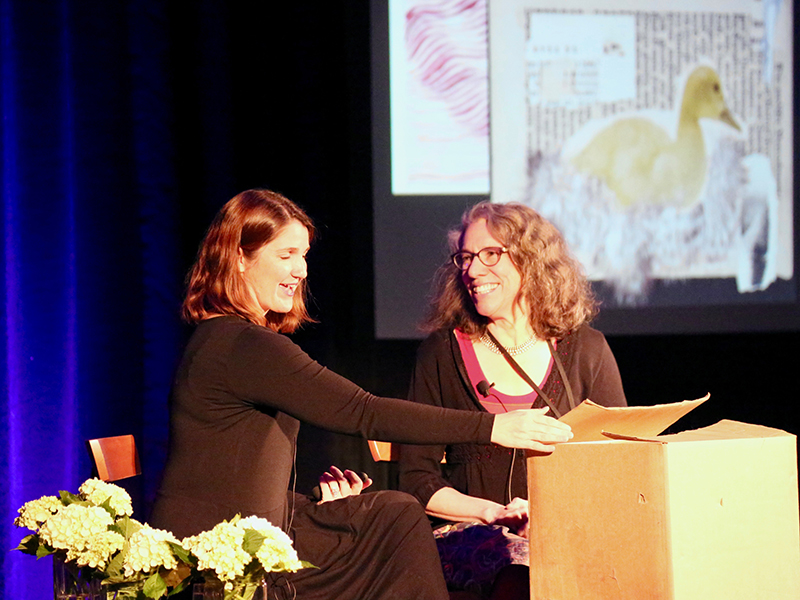
Main Stage Moment 6—Archives Live
(morning of Saturday, October 12, 2019)
“Archives Live” was an unexpected, incredibly engaging look at what shapes an artist. Judith Schaechter has just had her archives transferred to the Archives of American Art at the Smithsonian Institution, and she and the Archives’ curator, Mary Savig, walked the audience through the process by “unpacking” a box that included photos, early drawings, etc. While not all artists keep as much information as Schaechter did (Schaechter seems to be rather well-organized), it’s a reminder of how much those details add to some kind of understanding about what shapes a creative mind. While there has been concern, especially in scholarship that focuses on self-taught artists or women, with too much reliance on artist biography as a means to understand actions, motives, and artwork in an essentialist way, this exchange, and the establishment of these archives in general, showcases the value of sharing this kind of information. It may not always be critical for experiencing the work, but it adds a layer and a dimension that humanizes the artist in a very tangible way.
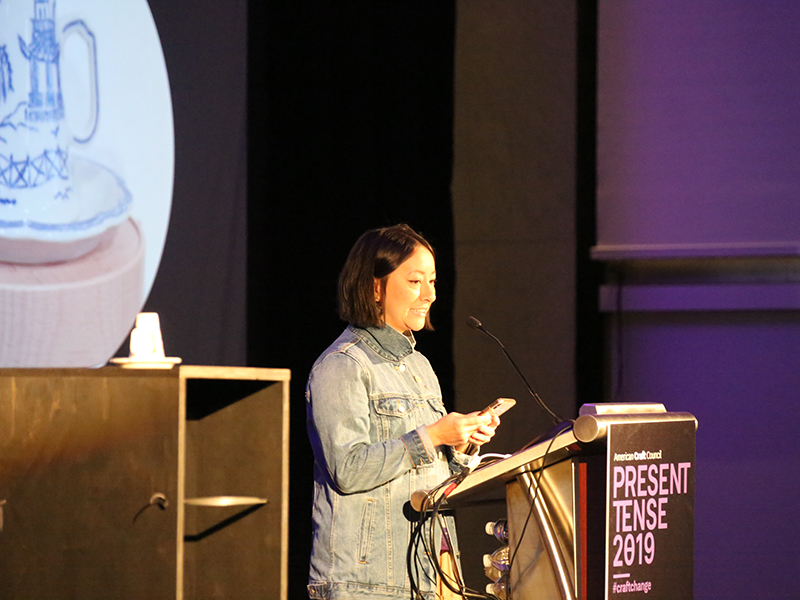
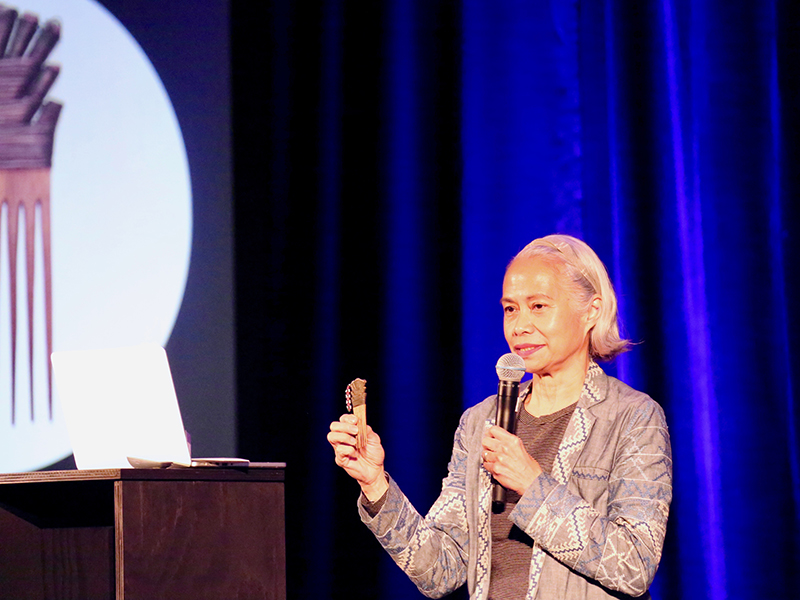
Object Story—Jennifer Ling Datchuk (morning of Saturday, October 12, 2019)
Main Stage programming was punctuated throughout the weekend with individual makers and innovators sharing “object stories.” What this meant was that an object was presented and then, in every instance, someone offered their reasoning regarding why this object—often handmade by the presenter or someone else—was meaningful to them. Jennifer Lynn Datchuk used a piece she had made as a catalyst to address her work as a whole and her belief in the power of craft. In fact, she offered a rallying cry for the craft field as a whole in her affirmation of “Craft you can!” This directive and encouragement could be used to spur individuals and groups to craft but it could also be used as a beacon for the craft ecosystem, i.e., Craft, you can … make a difference (or bring people together, or soothe souls, or change lives, etc.).
The object stories, each poignant in their own way, reiterated the power of objects to a group of people who make their living, in large part, understanding the power of objects. Concept-based work notwithstanding, the history of making “things,” of imbuing them with self and community and potential, was brought back home in the conference site itself. It was also underscored in the panel this reviewer sat on—where multiple generations of organizers in craft talked about the impact of 1969’s landmark project/exhibition, Objects: USA. Paul Smith, critically involved in the original project, offered valuable historical insight as he laid out motivating factors and the impetus behind certain decisions. His presence, and acknowledgement of his historical efforts, reinforced the notion of interplay among generations and the potential of the exchange. Also, the idea that 50 years later we are back to pushing the word “object” around in a very deliberate way almost forces us to look at why we would be doing so—what’s different now? What’s the same? Why “objects” then and why “objects” now?
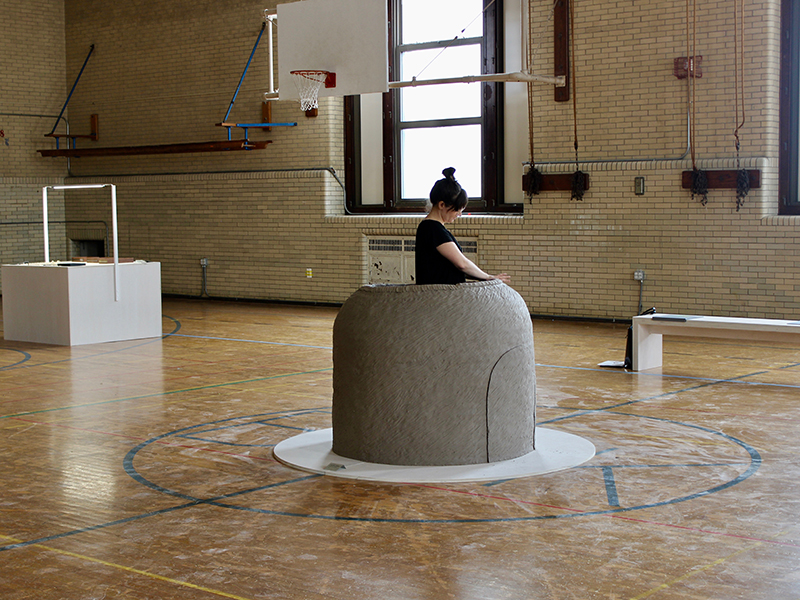
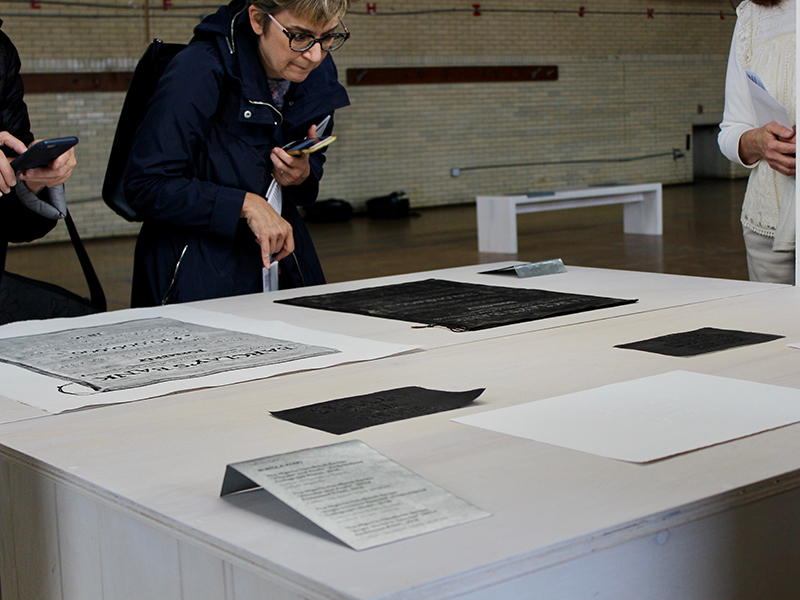
ACC Emerging Voices Awards exhibition
The focus on “objects” as a concept was also taken up with the conference-related off-site exhibition of ACC Emerging Voices Awards winners. The exhibition acknowledges fresh voices and the exhibition space itself reiterated the craft ecosystem conversation that had been initiated early in conference dialogue. The work of the Emerging Voices Awards winners was thoughtfully articulated in the gymnasium of the BOK building—a city-block-sized former school that has been repurposed for “small businesses, makers, community services, and more,” as BOK describes it. The exhibition was both a natural extension of the vibrant dialogue happening in other parts of the building and a standout space on its own.
While the award winners, working in a variety of media, are all noteworthy, the labor-intense works of Luci Jockel were especially provocative. Jockel, a RISD jewelry and metals alum, uses natural materials (beeswax, flowers, fungi, and animal remains such as bones, bee’s wings, insect carcasses, etc.) to create adornment and objects that stress “an interconnectivity between human and animal,” says Jockel. Her works most directly play with the history of objects that jewelry inherently addresses—with links to memory, sentiment, relationships, and value, as well as broader personal, social, and cultural meaning.
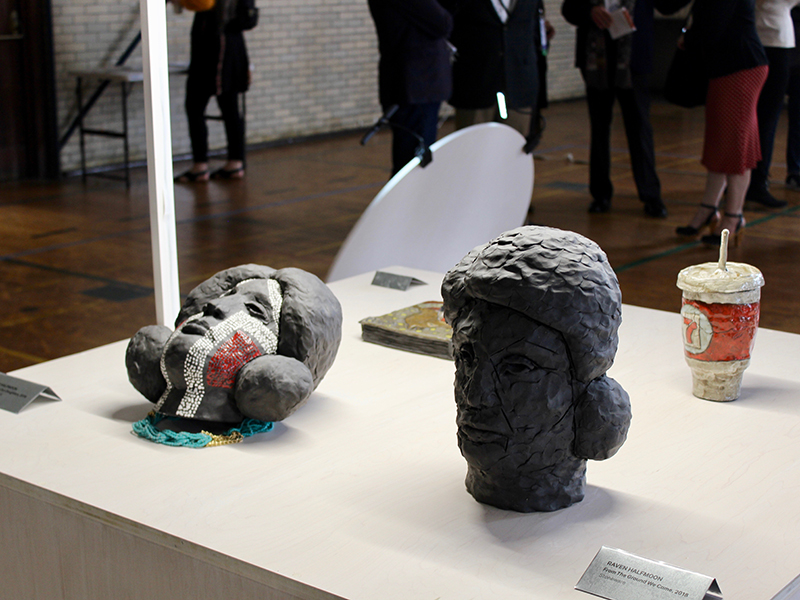
The grand ideas that are impacting the field currently—such as inclusivity and community—took a primary role at the conference. This is similar to ACC conferences of the recent past where the emphasis is on theory and idea over practice. History and tradition were touched on, but, as the name implied, the emphasis was on the present and, as theory, the future of craft. The role of digital technology, the potential to localize craft to define and understand place, the possibilities of intergenerational exchange, the possibility of craft as a positive, guiding force—all of these ideas and more created a web of meaning that also incorporated the potential of objects themselves.
